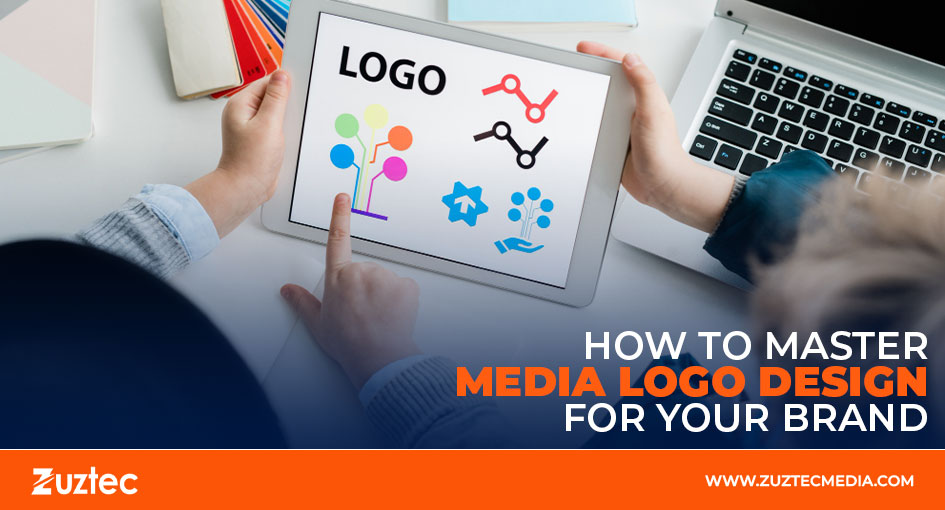
How to Master Media Logo Design for Your Brand
Creating a memorable and impactful logo is essential for building a strong brand identity in today’s digital world. A well-designed logo is often the first point of contact between a company and its audience, making it a powerful tool for communication and brand recognition. Regarding media logo design, the stakes are even higher, as media companies rely heavily on visual elements to convey their brand’s message, values, and style to a broad audience.
Media logo creation is not just about creating something visually appealing; it’s about crafting a symbol that resonates with your target audience, aligns with your brand’s mission, and stands out in a crowded market. A successful logo should be versatile enough to work across different platforms and media channels, from websites to social media profiles and physical products. It also needs to be timeless, scalable, and reflective of your brand’s core values.
This guide will walk you through the key principles of mastering media logo design for your brand. Understanding logo design fundamentals is crucial for new ventures and rebranding media companies. It involves understanding color theory, selecting appropriate typography, and balancing simplicity with creativity to create a media logo that effectively represents your brand.
Key Elements of Effective Media Logo Design
To create an impactful logo, you must first understand the key elements of media logo creation. These elements include simplicity, versatility, and relevance. A logo should be simple enough to be memorable but versatile enough to work across various platforms and media. Whether your logo appears on a small mobile app icon, a website, or a billboard, it needs to be adaptable.
When it comes to relevance, the design should align with your brand’s mission and values. The media industry is diverse, encompassing news outlets, entertainment companies, social media platforms, and more. Each of these sectors has a different audience and purpose, which should be reflected in the logo. For example, a logo for a news organization might focus on conveying authority and professionalism, while a logo for an entertainment company could be more playful and vibrant.
Developing a Strong Brand Identity
Before diving into the design process, it’s important to define your brand’s identity. What does your media company stand for? What audience are you targeting? Answering these questions will guide the creative process for your media logo creation.
Start by identifying the core values and mission of your brand. These aspects should influence every design decision, from color selection to typography. If your brand is focused on delivering news, you might want to use bold and authoritative colors like blue or black. For a brand focused on creativity and entertainment, more playful and vibrant colors such as red, yellow, or purple could be appropriate. Your logo should be a visual representation of your brand’s personality, helping your audience instantly connect with your company’s identity.
Choosing Colors and Typography
Color plays a critical role in media logo design, as it can evoke emotions and communicate messages even before someone reads the text. For instance, blue is often associated with trust and professionalism, while red can signify excitement or urgency. When selecting a color palette, consider how it reflects your brand’s core values and how it will look across various platforms and devices.
Typography is another essential component. The typeface you choose should complement the message you want to convey. A modern, sleek font might be fitting for a tech-savvy media company, while a more traditional font could work for a news outlet. Make sure the typography is legible and scalable, as your logo will need to work in different sizes and formats.
Simplifying Your Media Logo Design
One of the most crucial logo design elements is simplicity. . Overcomplicating your logo with too many elements can make it difficult to recognize and replicate across different media. In media logo creation, less is often more. A simple logo is easier to remember and can stand out in a crowded marketplace.
Major media brands like CNN, BBC, and Netflix use simple, recognizable logos without complex shapes or colors. To create a memorable image, strike a balance between simplicity and creativity, avoiding excessive details that can detract from the overall effectiveness of the logo.
Testing and Feedback
Once you’ve developed a draft of your media logo design, it’s essential to test it in different environments. Media companies often have to display their logos on websites, apps, social media, video content, and even physical products. Testing how your logo looks in different contexts will ensure its versatility.
Additionally, gather feedback from others within your company, as well as from target audience members if possible. External perspectives can help you identify strengths and weaknesses in your design. Don’t hesitate to make adjustments based on this feedback, as fine-tuning your logo is a natural part of the design process.
In conclusion, mastering media logo design involves a careful balance of creativity, strategy, and practicality. A well-designed media logo can set your brand apart, helping it to be instantly recognizable while conveying your brand’s identity and values. Whether you’re designing a logo for a new media brand or refreshing an existing one, focus on simplicity, relevance, and adaptability.
By thoroughly considering your brand identity, carefully selecting colors and typography, and ensuring your design is versatile across various platforms, you can create a logo that becomes a lasting symbol of your brand. Remember that feedback and iteration are part of the process, so be open to refining your design until it perfectly encapsulates your brand’s message. With these principles in mind, you can successfully create a media logo creation that stands the test of time and leaves a strong impression on your audience.

